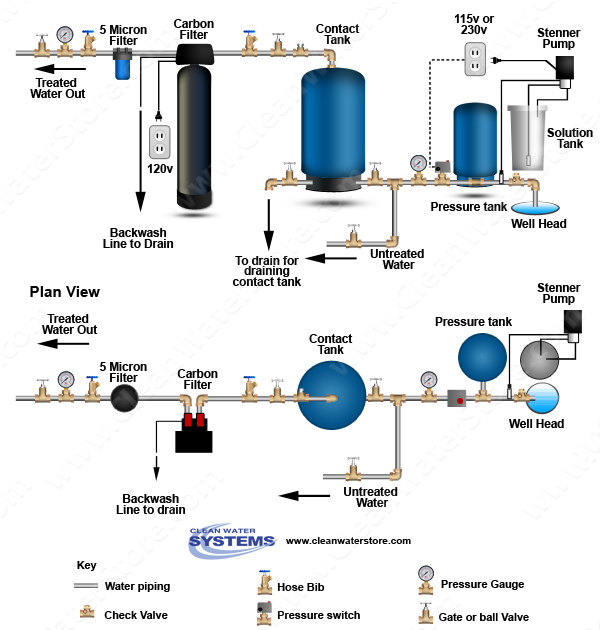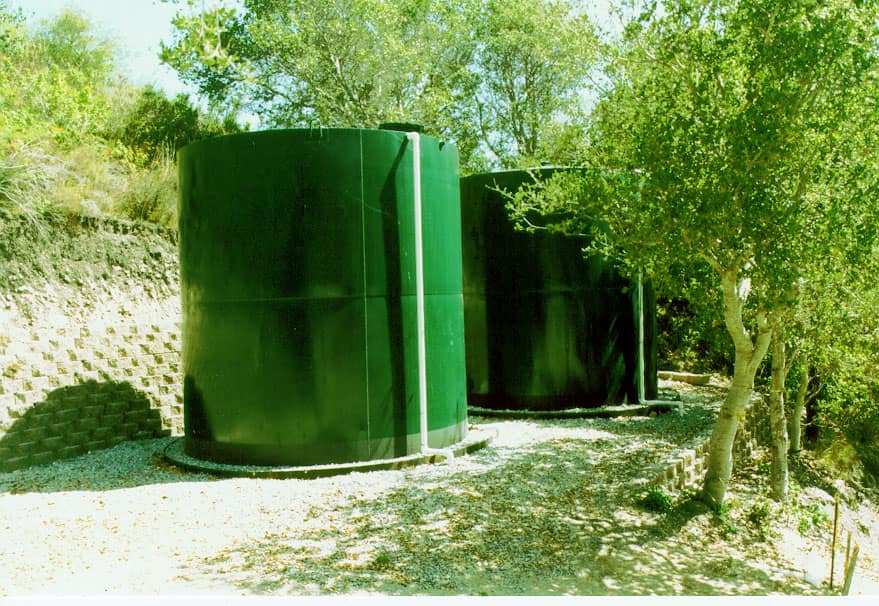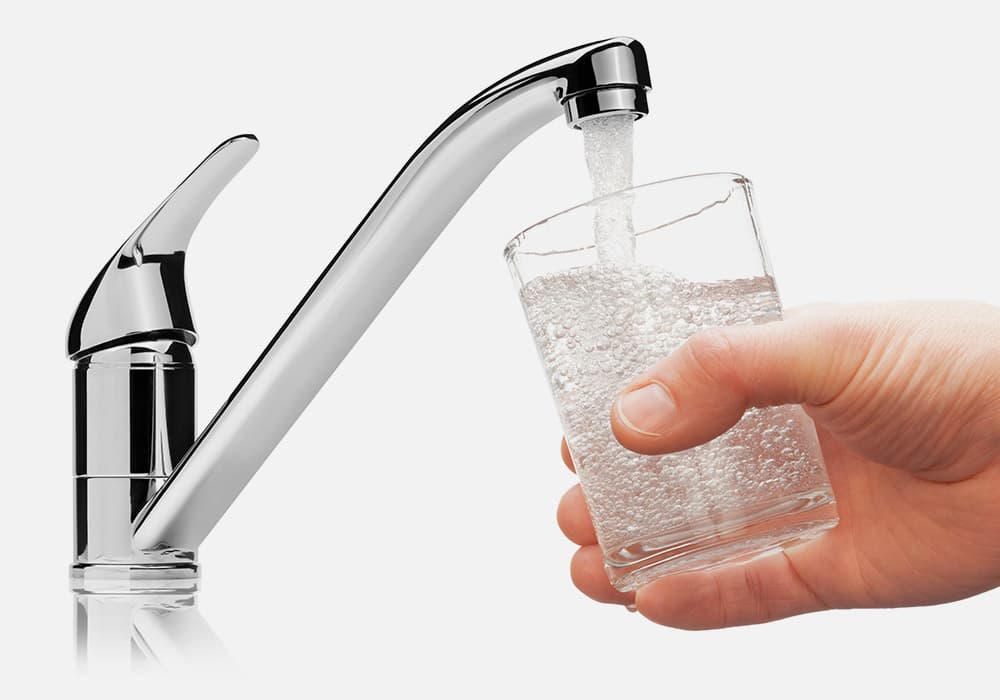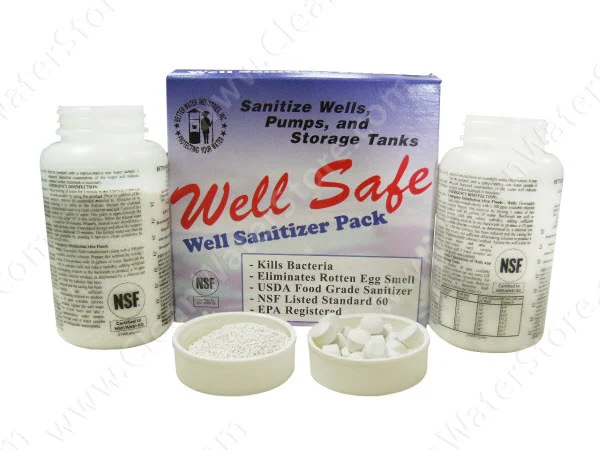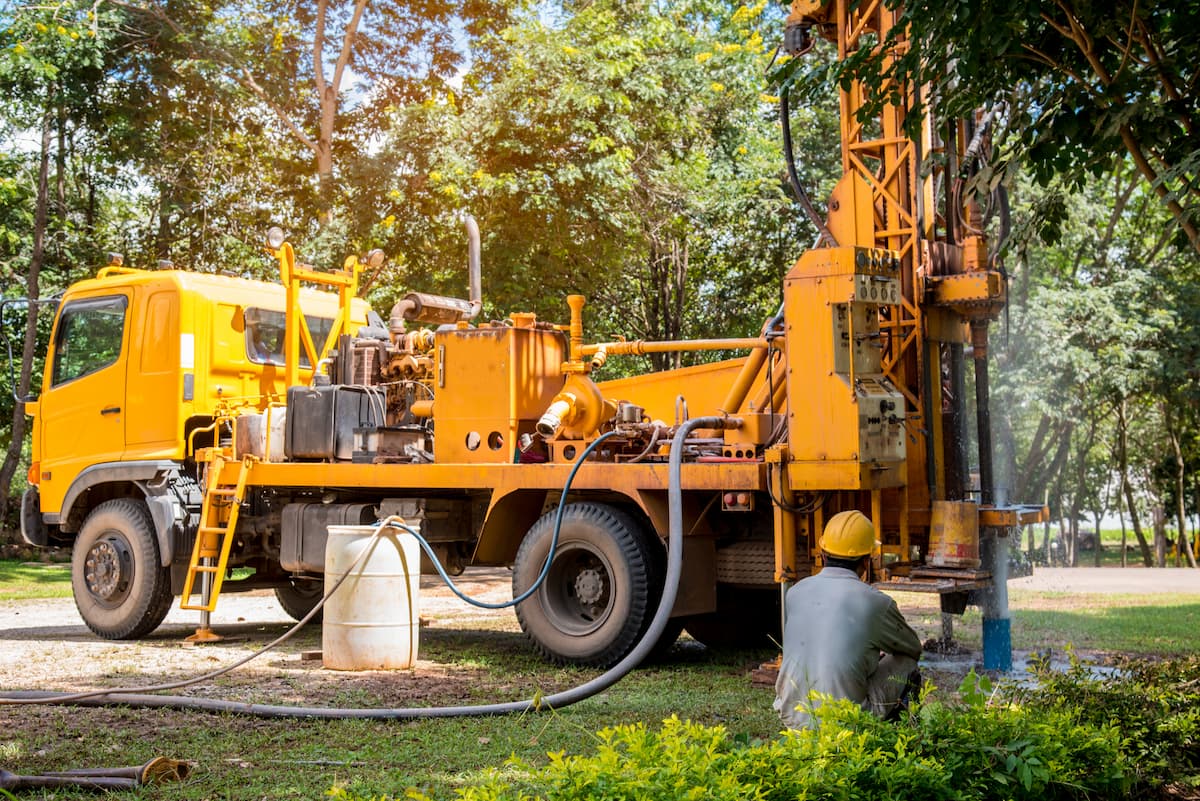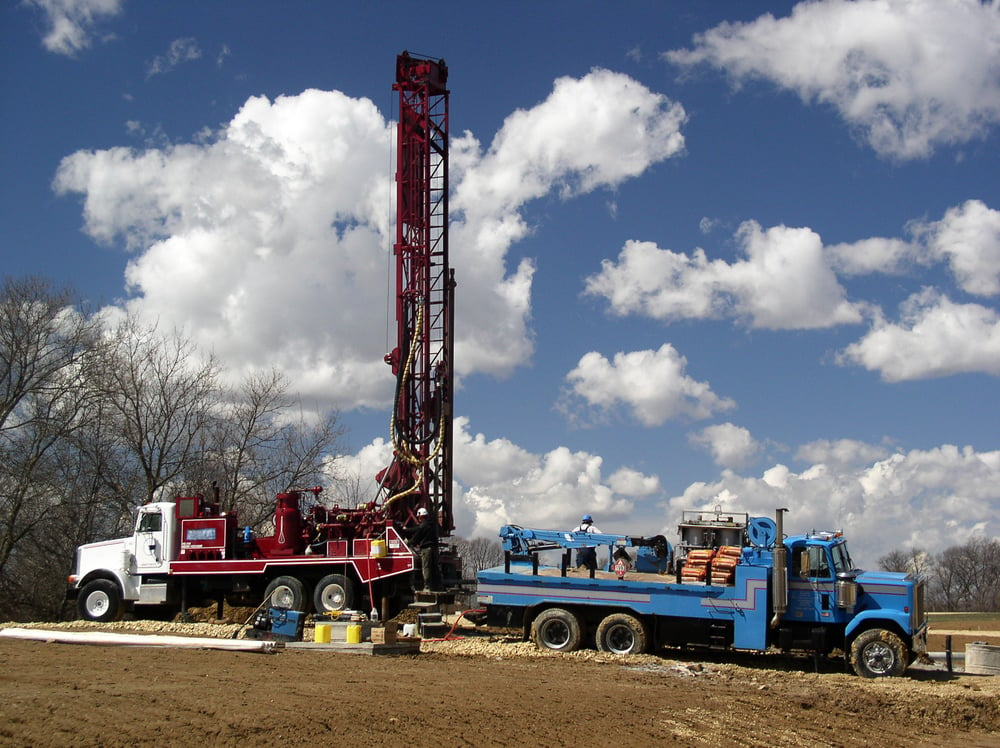Well Water Chlorinators – Popular and Low Cost Disinfection for Home Water Well Systems
Well Water Chlorinators: Affordable Disinfection for Home Systems
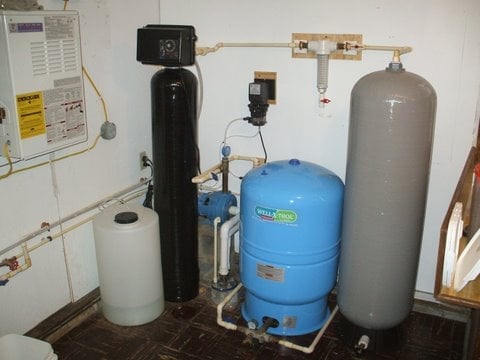
Small chlorination systems continue to be a low-cost and popular way for homeowners to disinfect their well water of bacteria, eliminate odor, and oxidize iron and manganese.
Despite improvements and lower costs in alternative disinfection systems such as hydrogen peroxide, ultraviolet light, and ozone, chlorination continues to be the most common method for disinfecting home well water systems.
Chlorine bleach has been used as the primary means to sanitize potable water supplies since the beginning of the 20th century. It is still the most popular disinfectant utilized in water treatment. Home well water chlorinators are favored because they are lower in cost and simple to install and operate.
No one likes to drink or bathe in water that smells like chlorine bleach. Fortunately, chlorine can be removed after the water has been treated with a low-cost carbon filter. So, it is simple to have sanitized yet chlorine-free water throughout the entire home.
Chlorine needs ample time to kill bacteria, eradicate odors, and treat iron after it comes into contact with the water. Generally, a minimum of 10 minutes of contact time is recommended for disinfection, but this varies depending on the water chemistry, temperature, and level of chlorine being injected.
The Three Types of Chlorinators
There are three main types of chlorinators used in home well water applications:
- Metering pumps using liquid chlorine bleach 2. In-Line Chlorine Solid Pellet Feeders 3. Well Pellet Drop Feeders
A chlorine generator is also important to consider for maintaining water quality, as it can be tailored to different pool capacities and maintenance requirements.
Metering pumps are the most popular approach to chlorinating well water, simple to set up and low in expense. The chlorine pump is installed, so it switches on and off as soon as the well pump switches on and off. Simply wire the chlorine metering pump to the current well pump pressure switch. In some cases, a flow switch or a flow sensor is used, which is activated if there is a flow of water. The metering pump turns on and off depending on the flow of the water.
With these types of chlorinators, common household bleach, 5% chlorine, or liquid swimming pool bleach, 10% chlorine, is commonly used. A plastic solution tank holds the chlorine bleach solution, and the metering pump draws the chlorine bleach liquid solution straight from the solution tank and ‘meters’ the chlorine at a controlled specific volume, inserting it into the water pipe. The injection point is located before the pressure tank to be effective. The quantity of chlorine in the water, called the “chlorine residual,” is simple to maintain and keep at a precise level when metering pump chlorinators are used.
Sometimes, the injection point must be located after the pressure tank. In this kind of installation, the water flow varies, so a variable-speed chlorinator should be used. This type of chlorinator has a flow meter that senses the speed at which the water flows and dispenses chlorine according to the flow rate.
Using a contact tank with liquid chlorination systems is important to allow sufficient time for the chlorine to work.
In-Line Pellet Feeders
Another type of chlorine for home systems comes in solid pellet form. This type is 70% calcium hypochlorite, a very powerful chlorine form. The pellets can be utilized inside a chlorinator called “erosion feeders”. In these types of chlorinators, a small portion of the pellet dissolves in the water as the water flows through the feeder.
These chlorinators do not require electricity to work and, therefore, are the cheapest of the three types. They are simple to manage and can frequently work for several months before the feeder needs more pellets.
In-line feeders do have a disadvantage, as the chlorine residual is hard to regulate.
Generally, the chlorine level is often too high immediately after these kinds of feeders, so a contact tank and carbon filtration are essential; otherwise, the water will smell and taste like chlorine bleach. However, these pellet feeders work great in some home well water applications and are easy to operate.
Pellet Drop Feeders
This kind of chlorinator uses a pellet feeder that runs when the well pump is operating and slowly drops pellets down into the well at defined time intervals.
The homeowner can easily regulate the rate at which the pellets are dropped. Solid pellet feeders are helpful for controlling iron bacteria and hydrogen sulfide in well water, but they are not typically used as a principal method of disinfecting well water.
Like the in-line pellet feeders, the chlorine residual can often be difficult to manage. Another problem can occur when too many chlorine pellets are dropped. The chlorine is often corrosive, causing damage to the well and pump.
Introduction to Well Water Chlorination Systems
Well water chlorination systems are designed to provide safe and clean drinking water by effectively removing bacteria, viruses, and other microorganisms that can cause waterborne diseases. These systems utilize chlorine to disinfect the water, ensuring it is safe for human consumption. For homeowners who rely on well water, these systems offer an effective and affordable solution to meet their drinking water needs.
One key advantage of well water chlorination systems is their ability to be customized to meet the specific requirements of each household. Factors such as water flow rate, chlorine demand, and maintenance needs can all be taken into account to create a system that works best for the home. By installing a well water chlorination system, homeowners can enjoy peace of mind, knowing that their drinking water is safe and clean.
Importance of Drinking Water Safety
Drinking water safety is a critical concern for households that rely on well water, as contaminated water can pose serious health risks. Well water can be contaminated with bacteria, viruses, and other microorganisms that can cause waterborne diseases such as cholera, typhoid fever, and dysentery. In addition to health risks, contaminated well water can also affect the water's taste, odor, and appearance, making it unpleasant to drink.
Ensuring drinking water safety is especially important for vulnerable populations such as the elderly, young children, and people with weakened immune systems. By installing a well water chlorination system, homeowners can ensure that their drinking water is safe and clean, significantly reducing the risk of waterborne diseases.
Well Water Contamination Risks
Well water can be contaminated with bacteria, viruses, and other microorganisms. Common sources of well water contamination include nearby agricultural activities, septic systems, and animal waste. Additionally, well water can be contaminated with chemicals such as pesticides, heavy metals, and volatile organic compounds (VOCs).
Natural disasters such as floods and hurricanes can also contaminate well water, making it essential to test the water regularly. By understanding the risks of well water contamination, homeowners can take proactive steps to protect their drinking water and ensure it is safe and clean.
How Well Water Chlorination Systems Work
Well water chlorination systems use chlorine to disinfect the water, effectively removing bacteria, viruses, and other microorganisms that can cause waterborne diseases. The system typically consists of a chlorine feeder, a contact tank, and a distribution system. The chlorine feeder adds chlorine to the water, which is then mixed with the water in the contact tank.
The contact tank allows the chlorine to contact the water for a sufficient amount of time to kill bacteria, viruses, and other microorganisms. The disinfected water is then distributed to the household through the distribution system, ensuring that it is safe and clean for consumption.
Types of Chlorination Systems
Several types of chlorination systems are available, each with its own advantages and disadvantages. Traditional chlorine pool systems use chlorine tablets or granules to disinfect the water. These systems are straightforward but may require more frequent maintenance.
Liquid chlorine systems disinfect the water using liquid chlorine, which is often more convenient and cost-effective than traditional chlorine pool systems. These systems are easy to manage and can provide consistent chlorine levels.
Salt chlorinators use salt to generate chlorine, which is then used to disinfect the water. These systems are popular for their low maintenance requirements and the softer feel they provide to the water. Each type of chlorination system has its own set of benefits, and the choice of system will depend on factors such as water flow rate, chlorine demand, and maintenance requirements.

